|
Printables |
PowerPoints |
Online exercises |
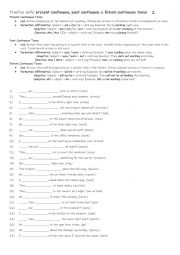
|
A1+-A2 Practise with present continuous, past continuous & future continuous tense 2
First, students need to familiarise themselves with the 3 tenses and use. Then they read the sentences to see which one is needed to complete the sentence using the given verb in (). Each tense is used 9 times! Answers on page 2.
Level: elementary
Age: 8-100
Type:
Downloads: 101
|
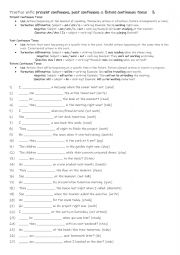
|
A1+-A2 Practise with present continuous, past continuous & future continuous tense 3
Mastery of these tenses enables students to sound more natural in conversations, switch between different time frames fluidly, and express real-time activities or future arrangements. Overall, these tenses are essential for building fluency and versatility in both spoken and written English. First, students need to familiarise themselves with the 3...
Level: elementary
Age: 8-100
Type:
Downloads: 115
|
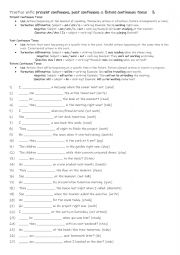
|
A1+-A2 Practise with present continuous, past continuous & future continuous tense 3
Overall, these tenses are essential for building fluency and versatility in both spoken and written English. First, students need to familiarise themselves with the 3 tenses and use. Then they read the sentences to see which one is needed to complete the sentence using the given verb in (). Each tense is used 9 times! Answers on page 2.
Level: elementary
Age: 8-100
Type:
Downloads: 102
|
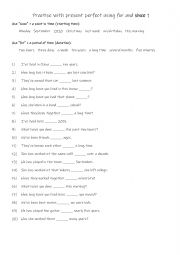
|
A1+-A2 Practise with present perfect using for and since 1
Students read the sentences and complete the sentences with the required word. Answers on page 2.
Level: elementary
Age: 8-100
Type:
Downloads: 116
|
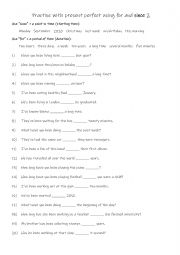
|
A1+-A2 Practise with present perfect using for and since 2
Students read the sentences and complete the sentences with the required word. Answers on page 2.
Level: elementary
Age: 8-100
Type:
Downloads: 116
|
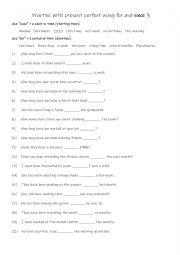
|
A1+-A2 Practise with present perfect using for and since 3
Students read the sentences and complete the sentences with the required word. Answers on page 2.
Level: elementary
Age: 8-100
Type:
Downloads: 127
|
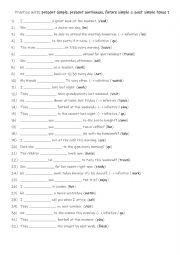
|
A1+-A2 Practise with present simple, present continuous, future simple & past simple tense 1
Students should learn and practice the present simple, present continuous, future simple, and past simple tenses at the A1+-A2 level because these tenses are essential for everyday communication, such as discussing routines, ongoing activities, past events, and simple future plans. They provide a solid foundation for learning more advanced grammar ...
Level: elementary
Age: 8-100
Type:
Downloads: 115
|
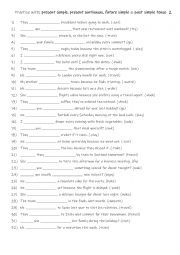
|
A1+-A2 Practise with present simple, present continuous, future simple & past simple tense 2
First, students need to familiarise themselves with the 4 tenses and their use. Then they read the sentences to see which one is needed to complete the sentence using the given infinitive in (). Each tense is used 8 times! Answers on page 2.
Level: elementary
Age: 8-100
Type:
Downloads: 115
|
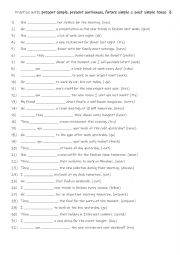
|
A1+-A2 Practise with present simple, present continuous, future simple & past simple tense 3
Students should learn and practice the present simple, present continuous, future simple, and past simple tenses at the A1+-A2 level because these tenses are essential for everyday communication, such as discussing routines, ongoing activities, past events, and simple future plans. They provide a solid foundation for learning more advanced grammar ...
Level: elementary
Age: 8-100
Type:
Downloads: 115
|
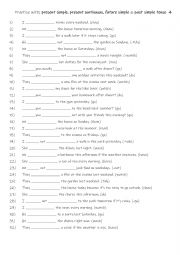
|
A1+-A2 Practise with present simple, present continuous, future simple & past simple tense 4
Students should learn and practice the present simple, present continuous, future simple, and past simple tenses at the A1+-A2 level because these tenses are essential for everyday communication, such as discussing routines, ongoing activities, past events, and simple future plans. They provide a solid foundation for learning more advanced grammar ...
Level: elementary
Age: 7-100
Type:
Downloads: 104
|
|
|
|
|












